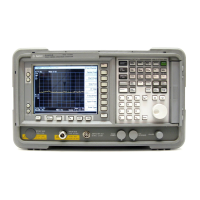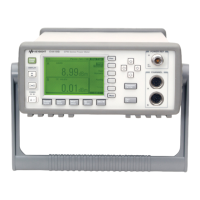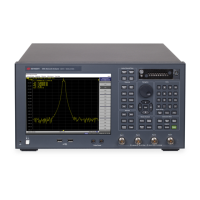Chapter 4 4-23
Troubleshooting
Error Message Types
Error Message Types
Events do not generate more than one type of error. For example, an
event that generates a query error will not generate a device-specific,
execution, or command error.
–499 to –400:
Query Errors
These errors indicate that the instrument output queue control has
detected a problem with the message exchange protocol described in
IEEE 488.2, Chapter 6. Errors in this class set the query error bit (bit
2) in the event status register (IEEE 488.2, section 11.5.1). These errors
correspond to message exchange protocol errors described in IEEE
488.2, 6.5. In this case:
• Either an attempt is being made to read data from the output queue
when no output is either present or pending, or
• data in the output queue has been lost.
–399 to –300:
Device-Specific
Error Messages
These errors indicate that the instrument output queue control has
detected a problem with the message exchange protocol described in
IEEE 488.2, Chapter 6. Errors in this class set the query error bit (bit
2) in the event status register (IEEE 488.2, section 11.5.1). These errors
correspond to message exchange protocol errors described in IEEE
488.2, 6.5. In this case:
• Either an attempt is being made to read data from the output queue
when no output is either present or pending, or
• data in the output queue has been lost.
–299 to –200:
Execution Error
Messages
These errors indicate that an error has been detected during
instrument execution.
–199 to –100:
Command Errors
These errors indicate that the instrument parser detected an IEEE
488.2 syntax error. Errors in this class set the command error bit (bit 5)
in the event status register (IEEE 488.2, section 11.5.1). In this case:
• Either an IEEE 488.2 syntax error has been detected by the parser
(a control-to-device message was received that is in violation of the
IEEE 488.2 standard. Possible violations include a data element
which violates device listening formats or whose type is
unacceptable to the device.), or
• an unrecognized header was received. These include incorrect
device-specific headers and incorrect or unimplemented IEEE 488.2
common commands.

